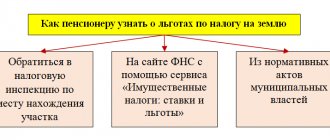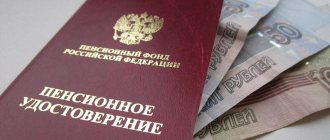If tax payments are transferred to the budget late (that is, in violation of the established deadlines), then in addition to the taxes themselves, penalties must also be paid. Calculating penalties is perhaps one of the most routine tasks that an accountant has to solve. However, for its successful implementation, he needs to take into account a number of nuances.
At the beginning, let us recall the main points regarding the fulfillment of the obligation to pay tax, defined in paragraph 3 of Art. 45 Tax Code of the Russian Federation:
- the obligation to pay tax is considered fulfilled by the taxpayer only after he submits the corresponding order to the bank. This order confirms the transfer of funds to the Federal Treasury account;
- the bank account of the taxpayer presenting the order must have a sufficient cash balance at the time of making the payment.
How does a penalty differ from a fine?
These are two different types of penalties. They both impose a fee for failure to fulfill obligations, but the accrual mechanism is different. So, the fine involves a fixed amount of money. For example, for late payments on a credit card, the bank imposes a one-time fine of 590 rubles.
A penalty is a certain percentage that is charged on the amount of debt. Let’s say the penalty for the supply of some goods is 0.1% per day of its cost. Most often, one type of penalty is applied, less often both at once, when, according to the contract, a fine must be paid, and the penalty accrues every day.
As for consumer lending agreements, banks can only impose penalties on them, and in the amount limited by law to 20% per annum. But fines may apply to credit cards.
Possible consequences
The presence of sanctions on government transactions for the supplier not only entails additional costs on his part, but also spoils his integrity.
So, in part 3 of Art. 37 No. 44-FZ it is established that this quality is confirmed by information from the register of contracts. A supplier who fulfills contracts without charging a penalty will be considered bona fide.
IMPORTANT!
The register of contracts must include data on liability (on penalties and fines - clause 10, part 2, article 103).
Therefore, in future transactions, customers will be able to assess the responsibility of the contractor even before starting work with him.
Tax penalties
The Federal Tax Service is the body that very actively charges penalties. Many Russians do not particularly pay attention to tax payment deadlines and often do not know about them at all. And there is a transport tax, land tax, real estate tax, income tax, etc. And each must be paid on time.
It’s good if you receive a receipt from the Federal Tax Service, which you can pay. But often it is not there, and a citizen learns about delays and penalties only from the corresponding letters or on the State Services portal.
The amount of penalties for tax fees is indicated in Article 75 of the Tax Code of the Russian Federation, which is dedicated to this point. Here's what the law says:
- for individuals, a penalty is applied in the form of 1/300 of the refinancing rate of the Central Bank of the Russian Federation, current at the moment;
- for organizations in the first 30 days of delay, a penalty of 1/300 of the refinancing rate of the Central Bank of the Russian Federation is provided. Starting from the 31st day, another 1/150th is added to it.
At the same time, the law determines the moments at which the taxpayer can cancel the penalty. They are not accrued if, as part of judicial proceedings, the property of a person or company was seized, if a decision was made to suspend operations on his accounts. In this case, you need to contact the Federal Tax Service and write a corresponding application.
The legislative framework
If citizens violate tax payment deadlines, there are two options for liability:
- criminal;
- tax office
The first occurs if a citizen deliberately hides his own taxes or objects for which he should have paid taxes. In the second case, the taxpayer has a debt to the local budget.
The procedure for paying taxes is discussed in Article 122 of the Tax Code.
How to find out how many penalties have been accrued
If you received a letter, all information will be reflected in it. You can also view the amount of tax due for payment and all accrued penalties in your personal account of the Federal Tax Service. If you have an account on State Services, all relevant information will be reflected there.
If taxes are overdue, the amount due is divided into two parts. The due tax fee is formed by one receipt, and the accrued penalties by another. This is what it looks like on the Government Services portal:
Moreover, if you plan to pay off the entire debt, initially you need to pay off the tax itself, only then the accrued penalties. After payment, within 10 days the Federal Tax Service will process the payment and update information on the amount of penalties:
The fact is that penalties are charged for each day of late payment. That is, while the payment is being processed, the penalty will accrue again during these days, and the amount will be slightly different.
Statute of limitations
Like most other offenses, failure to pay taxes has its own statute of limitations. This point is indicated in Article 113 of the Tax Code. In this case, the statute of limitations is three years.
Accordingly, if the tax period is a year, then the penalty will be accrued from the first February of the given year. After the three-year period has expired, it will no longer be possible to hold the taxpayer accountable. However, you should not hope that you will be able to wait quietly for three years. It is unlikely that desk checks will be avoided during this entire period.
If tax representatives during this time are able to draw up a report and prove that the debtor is interfering with inspections, then the statute of limitations will automatically cease to accrue.
Penalties for non-payment of loans
Penalties are a constant companion for those who do not fulfill their obligations under loan agreements. But if previously banks themselves regulated the amount of penalties, now at the legislative level all penalties are limited.
This was done on purpose, since some creditors set unreasonably high penalties, plus fines. As a result, borrowers who committed even a one-time delay fell into a real debt hole from which they could not get out.
So situations arose when, with an initial loan amount of 100,000 rubles, a person found himself owing 1,000,000 rubles or even more. To stop this, the Central Bank decided to limit bankers in terms of assigning penalties, which is reflected in Federal Law No. 353 On consumer credit.
Financial institutions are offered a choice of two options for calculating penalties:
- If the interest due under the agreement continues to accrue. In this case, penalties will be 20% per annum.
- If the bank stops accruing interest, then the penalty amount is 0.1% per day.
In the vast majority of cases, banks adhere to the scheme of calculating penalties in the amount of 20% per annum and at the same time continue to assign interest under the agreement. The law prohibits them from taking fines.
If you do the calculation, then 20% per annum is not so much, only 0.055% per day. For example, if the amount overdue is 10,000 rubles, then the next day it will be credited with 5.5 rubles. But these 5.5 are counted towards the unpaid amount; the next day the penalty will be calculated from 10,005.5 rubles.
If you are in arrears on your loan, it is better not to delay, but to turn to the bank for help, for example, for restructuring. Otherwise, next month, after the next payment is not made, the overdue amount will increase and the penalties will be higher. And the further, the more serious the growth of debt will be.
An example of how to fill out a payment form to pay a fine
Initial data:
| Parameter | Meaning |
| Tax | VAT |
| Payment type | Fine |
| KBK | 182 1 0300 110 |
| Period | III quarter 2020 |
| Sum | 1000 rub. |
| Basis of payment | Debt repayment on demand |
An example of how to fill out a payment form for a VAT penalty at the request of the tax authority:
Penalties for loans from microfinance organizations
A slightly different situation concerns those who owe money to microfinance organizations. The penalty for the amount of debt is calculated exactly the same as in the case of a bank loan. That is, according to Federal Law-353, this is 20% per annum, plus the rate stipulated by the contract.
But it was the microcredit sector that drove borrowers into real bondage. The fact is that today the marginal rate on loans is 1% per day, which is most often prescribed by lenders, and this is 365% per annum. That is, 365% is added to 20% per annum. As a result, the debt increases dramatically quickly.
In order to protect borrowers from unreasonably high penalties, the amount that microlenders can demand in the form of penalties is legally limited. In the form of penalties and interest, the MFO is not authorized to demand from the borrower more than 1.5 times the loan amount.
Simply put, if the amount of microloans at the time of issuance was 10,000 rubles, then in the form of interest and penalties in case of delay, the microfinance organization can charge a maximum of 15,000. That is, the total amount required for repayment cannot be more than 25,000 rubles.
All legal MFOs comply with this legal norm. All companies are controlled by the Central Bank of the Russian Federation, so it is not in their interests to exceed their powers.
Possibility of reducing penalties
The general rule of Article 333 of the Civil Code of the Russian Federation applies to penalties (including penalties) under government contracts, stating that such a penalty can be reduced if it is disproportionate to the main obligation. To do this, the debtor must declare a reduction before the end of the consideration of the case on the merits and the removal of the court of 1st instance to the deliberation room.
If you found this article helpful, please rate it on the star scale below, with 5 stars being very helpful.
We want you to read only interesting materials, and we will be grateful for your feedback!
Penalties for non-payment of utilities
The type of utility service provided does not matter. If a person does not pay public utilities, they are legally entitled to charge penalties. This issue is regulated by Article 14 of Federal Law No. 155, which explains the issues of payment for utility services.
What ends up happening:
- for the first 30 days after the delay, no penalties are imposed;
- starting from the 31st day, penalties are imposed in the amount of 1/300 of the refinancing rate;
- starting from the 91st day, the amount of the penalty increases to 1/130 of the refinancing rate of the Central Bank of the Russian Federation.
So, the longer the delay, the higher the penalties. But in the case of public services, a penalty forgiveness mechanism is often used. For example, on the eve of the New Year, the service provider often announces a promotion according to which all penalties are written off if the debtor pays off the principal debt. And this is an excellent reason to take advantage of the situation and rid yourself of debt.
In connection with the coronavirus pandemic, the government issued a resolution according to which the accrual of fines and penalties is suspended until January 1, 2021.
We looked at what penalties are, how they work, and the amount of penalties for the most popular obligations. But each form of contractual relationship has its own rules and laws. But the calculation scheme and the principle of operation of penalties are the same everywhere.
Give your rating
Information sources:
- ConsultantPlus: Tax Code of the Russian Federation Article 75. Penalty.
- ConsultantPlus: Federal Law-353 On consumer credit (loan).
- Website of the Bank of Russia: Microfinance: new restrictions on the maximum debt and daily interest rate.
- Consultant Plus: Decree of the Government of the Russian Federation on the suspension of penalties for utilities.
about the author
Irina Rusanova - higher education at the International East European University in the direction of "Banking". Graduated with honors from the Russian Economic Institute named after G.V. Plekhanov with a major in Finance and Credit. Ten years of experience in leading Russian banks: Alfa-Bank, Renaissance Credit, Home Credit Bank, Delta Credit, ATB, Svyaznoy (closed). He is an analyst and expert of the Brobank service on banking and financial stability. [email protected]
Is this article useful? Not really
Help us find out how much this article helped you. If something is missing or the information is not accurate, please report it below in the comments or write to us by email
Comments: 8
Your comment (question) If you have questions about this article, you can tell us. Our team consists of only experienced experts and specialists with specialized education. We will try to help you in this topic:
Author of the article Irina Rusanova
Consultant, author Popovich Anna
Financial author Olga Pikhotskaya
- Anonymous
09.09.2021 at 15:11 If the main debt for utilities (telephone) is paid. but the penalties remain, tell me about the unpaid penalties, penalties will be charged
Reply ↓ Anna Popovich
09.09.2021 at 20:30Dear author, no, as a general rule, such an accrual is impossible.
Reply ↓
09/04/2021 at 00:26
Which executive body controls the correct calculation of penalties for late payments for major repairs?
Reply ↓
- Anna Popovich
04.09.2021 at 19:53
Dear Vasilisa, its accrual for non-payment or late payment is enshrined in clause 14.1 of Article 155 of the Housing Code of the Russian Federation.
Reply ↓
04/19/2021 at 21:12
How long does it take to pay penalties on taxes? Are such deadlines legally established?
Reply ↓
- Anna Popovich
04/20/2021 at 02:29
Dear Sergey. As a general rule, penalties on demand must be paid within eight working days after receipt, unless the tax office has set a different deadline. Legally, this is regulated by the Tax Code of the Russian Federation.
Reply ↓
03/10/2021 at 14:54
“starting from the 31st day, penalties are assigned in the amount of 1/300 of the refinancing rate; starting from the 91st day, the amount of the penalty increases to 1/300 of the refinancing rate of the Central Bank of the Russian Federation.” - so what's the difference?
Reply ↓
- Anna Popovich
03/10/2021 at 15:56
Dear Vladimir, the penalty is calculated in the amount of 1/300 of the Central Bank refinancing rate in effect on the day of actual payment of the amount not paid on time for each day of late payment, starting from the 31st day from the day of late payment, established by the payment deadline, and until the actual payment within 90 days from the date of payment established by the agreement. If payment is not made within the above period from the 91st day, the calculation is made in the amount of 1/130 of the Central Bank refinancing rate.
Reply ↓
What is KBC?
The budget classification code or BCC is a code that is intended to group items of the state budget. It is used to control reporting on budget execution. The code is indicated in the payment notice of fines or tax payments and consists of 20 digits.
These 20 digits are divided into four parts:
- the first part is the notification receipt administrator (three digits);
- the second part is the type of income (4-13 digits in order);
- the third part is the program (4 characters from 14 to 17);
- quadruple part – classification: tax income, from property, paid services, etc. (last three digits).
The second part of the code consists of 10 digits: Income group is the first digit, the next two are the subgroup, the article and subitem occupy 8-11 digits, and the element takes the remaining two.
It turns out that the KBK looks something like this: 392 200 120. Each code is established by the Ministry of Finance. See the full table below:
| Code | Description | |
| 182 | 10606011031000110 | Land tax levied at rates established in accordance with subparagraph 1 of paragraph 1 of Article 394 of the Tax Code of the Russian Federation and applied to taxable objects located within the boundaries of intra-city municipalities of the federal cities of Moscow and St. Petersburg |
| 182 | 10606011032000110 | Penalties for land tax levied at rates established in accordance with subparagraph 1 of paragraph 1 of Article 394 of the Tax Code of the Russian Federation and applied to taxable objects located within the boundaries of intra-city municipalities of the federal cities of Moscow and St. Petersburg |
| 182 | 10606011033000110 | Fines for land tax levied at rates established in accordance with subparagraph 1 of paragraph 1 of Article 394 of the Tax Code of the Russian Federation and applied to taxable objects located within the boundaries of intra-city municipalities of the federal cities of Moscow and St. Petersburg |
| 182 | 10606012041000110 | Land tax levied at rates established in accordance with subparagraph 1 of paragraph 1 of Article 394 of the Tax Code of the Russian Federation and applied to taxable objects located within the boundaries of urban districts |
| 182 | 10606012042000110 | Penalties for land tax levied at rates established in accordance with subparagraph 1 of paragraph 1 of Article 394 of the Tax Code of the Russian Federation and applied to taxable objects located within the boundaries of urban districts |
| 182 | 10606012043000110 | Fines for land tax levied at rates established in accordance with subparagraph 1 of paragraph 1 of Article 394 of the Tax Code of the Russian Federation and applied to taxable objects located within the boundaries of urban districts |
| 182 | 10606013051000110 | Land tax levied at rates established in accordance with subparagraph 1 of paragraph 1 of Article 394 of the Tax Code of the Russian Federation and applied to tax objects located within the boundaries of inter-settlement territories |
| 182 | 10606013052000110 | Penalties for land tax levied at rates established in accordance with subparagraph 1 of paragraph 1 of Article 394 of the Tax Code of the Russian Federation and applied to tax objects located within the boundaries of inter-settlement territories |
| 182 | 10606013053000110 | Fines for land tax levied at rates established in accordance with subparagraph 1 of paragraph 1 of Article 394 of the Tax Code of the Russian Federation and applied to tax objects located within the boundaries of inter-settlement territories |
| 182 | 10606013101000110 | Land tax levied at rates established in accordance with subparagraph 1 of paragraph 1 of Article 394 of the Tax Code of the Russian Federation and applied to tax objects located within the boundaries of settlements |
| 182 | 10606013102000110 | Penalties for land tax levied at rates established in accordance with subparagraph 1 of paragraph 1 of Article 394 of the Tax Code of the Russian Federation and applied to taxable objects located within the boundaries of settlements |
| 182 | 10606013103000110 | Fines for land tax levied at rates established in accordance with subparagraph 1 of paragraph 1 of Article 394 of the Tax Code of the Russian Federation and applied to taxable objects located within the boundaries of settlements |
| 182 | 10606021031000110 | Land tax levied at rates established in accordance with subparagraph 2 of paragraph 1 of Article 394 of the Tax Code of the Russian Federation and applied to taxable objects located within the boundaries of intra-city municipalities of the federal cities of Moscow and St. Petersburg |
| 182 | 10606021032000110 | Penalties for land tax levied at rates established in accordance with subparagraph 2 of paragraph 1 of Article 394 of the Tax Code of the Russian Federation and applied to taxable objects located within the boundaries of intra-city municipalities of the federal cities of Moscow and St. Petersburg |
| 182 | 10606021033000110 | Fines for land tax levied at rates established in accordance with subparagraph 2 of paragraph 1 of Article 394 of the Tax Code of the Russian Federation and applied to taxable objects located within the boundaries of intra-city municipalities of the federal cities of Moscow and St. Petersburg |
| 182 | 10606022041000110 | Land tax levied at rates established in accordance with subparagraph 2 of paragraph 1 of Article 394 of the Tax Code of the Russian Federation and applied to taxable objects located within the boundaries of urban districts |
| 182 | 10606022042000110 | Penalties for land tax levied at rates established in accordance with subparagraph 2 of paragraph 1 of Article 394 of the Tax Code of the Russian Federation and applied to taxable objects located within the boundaries of urban districts |
| 182 | 10606022043000110 | Fines for land tax levied at rates established in accordance with subparagraph 2 of paragraph 1 of Article 394 of the Tax Code of the Russian Federation and applied to taxable objects located within the boundaries of urban districts |
| 182 | 10606023051000110 | Land tax levied at rates established in accordance with subparagraph 2 of paragraph 1 of Article 394 of the Tax Code of the Russian Federation and applied to tax objects located within the boundaries of inter-settlement territories |
| 182 | 10606023052000110 | Penalties for land tax levied at rates established in accordance with subparagraph 2 of paragraph 1 of Article 394 of the Tax Code of the Russian Federation and applied to taxable objects located within the boundaries of inter-settlement territories |
| 182 | 10606023053000110 | Fines for land tax levied at rates established in accordance with subparagraph 2 of paragraph 1 of Article 394 of the Tax Code of the Russian Federation and applied to tax objects located within the boundaries of intersettlement territories |
| 182 | 10606023101000110 | Land tax levied at rates established in accordance with subparagraph 2 of paragraph 1 of Article 394 of the Tax Code of the Russian Federation and applied to tax objects located within the boundaries of settlements |
| 182 | 10606023102000110 | Penalties for land tax levied at rates established in accordance with subparagraph 2 of paragraph 1 of Article 394 of the Tax Code of the Russian Federation and applied to taxable objects located within the boundaries of settlements |
| 182 | 10606023103000110 | Fines for land tax levied at rates established in accordance with subparagraph 2 of paragraph 1 of Article 394 of the Tax Code of the Russian Federation and applied to taxable objects located within the boundaries of settlements |







